MARKET OVERVIEW
The Global Lycopene Market is driven by a confluence of factors beyond the market's conventional boundaries. Lycopene, a naturally occurring carotenoid pigment found in tomatoes, watermelons, and other red fruits, is at the heart of this market’s growth trajectory. The market’s landscape is shaped by a multifaceted interplay of consumer trends, technological advancements, and agricultural practices.
The Global Lycopene Market is characterized by a surge in demand for natural antioxidants and health-promoting compounds. Consumers, in an era marked by a heightened awareness of the link between diet and well-being, are increasingly drawn towards lycopene-rich products. The market caters to a discerning audience seeking not only nutritional value but also the potential health benefits associated with lycopene consumption.
Beyond the dietary, the Global Lycopene Market finds itself deeply entrenched in the pharmaceutical and cosmetic industries. The medicinal properties of lycopene, including its antioxidant and anti-inflammatory attributes, have spurred research and development initiatives. Pharmaceutical formulations leveraging lycopene’s therapeutic potential are gaining prominence, presenting a new frontier in the market.
Moreover, lycopene’s role in skincare has witnessed a burgeoning interest. As consumers seek natural alternatives in personal care products, lycopene’s skin-friendly attributes have become a focal point for cosmetic formulators. The market, therefore, extends its influence into the beauty and wellness domain, showcasing a versatility that goes beyond its origins in agriculture.
The agriculture sector, too, plays a pivotal role in shaping the Global Lycopene Market. The cultivation practices, climate variations, and regional dynamics contribute to the market’s supply chain intricacies. Sustainability concerns and the emphasis on organic farming practices further add layers to the market’s narrative, reflecting the broader global shift towards eco-conscious choices.
The Global Lycopene Market emerges as a vibrant tapestry woven with threads of health consciousness, technological innovation, and agricultural dynamics. Its significance surpasses the traditional boundaries of a commodity market, embodying a nexus of diverse industries and consumer preferences. The trajectory of this market, propelled by the multifaceted utility of lycopene, unfolds as a narrative of adaptability and evolution, mirroring the dynamic forces shaping our contemporary world.
Global Lycopene market is estimated to reach $196.6 Million by 2030; growing at a CAGR of 4.9% from 2023 to 2030.
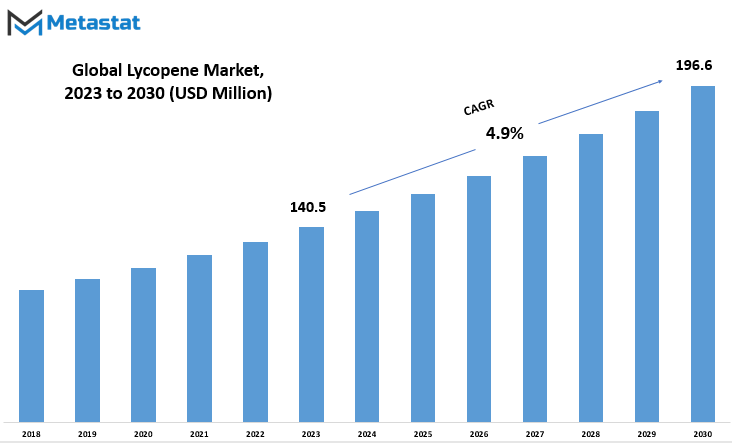
GROWTH FACTORS
The Global Lycopene Market is influenced by several growth factors that collectively contribute to its expansion. One key driver is the increasing awareness of the health benefits associated with lycopene consumption. As people become more conscious of their well-being, there's a growing demand for natural antioxidants, and lycopene, found abundantly in tomatoes and other red fruits, fits the bill.
Moreover, the food and beverage industry's continuous exploration of natural colorants propels the demand for lycopene as a preferred choice for enhancing the visual appeal of various products. The market benefits from the rising consumer preference for natural and organic ingredients, aligning with the broader trend towards healthier lifestyles.
The skincare and cosmetics sector also plays a pivotal role in the market's growth. Lycopene's antioxidant properties make it a sought-after ingredient in beauty products, given its potential to protect the skin from damage caused by UV radiation and environmental pollutants. As consumers increasingly seek products with added health benefits, the cosmetic industry's integration of lycopene contributes significantly to market expansion.
Another factor fostering market growth is the ongoing research and development initiatives aimed at unlocking new applications for lycopene. As science delves deeper into the potential health advantages of this compound, new avenues emerge, broadening its utilization in pharmaceuticals, nutraceuticals, and functional foods.
Furthermore, the geographical expansion of the market is influenced by the increasing adoption of lycopene in various regions. As dietary preferences evolve, the incorporation of lycopene-rich foods in traditional cuisines and the introduction of lycopene-infused products contribute to the market's global reach.
The growth of the Global Lycopene Market is intricately woven into the fabric of evolving consumer preferences, health consciousness, and the dynamic landscape of the food, beauty, and pharmaceutical industries.
MARKET SEGMENTATION
By Source
The Synthetic segment, valued at 82.5 USD Million in 2022, represents lycopene synthesized through artificial processes. This source offers a controlled and reproducible method of production, ensuring a consistent supply of lycopene. Industries favor synthetic lycopene for its reliability and cost-effectiveness, meeting the demand in various products.
On the other hand, the Natural segment, valued at 51.8 USD Million in 2022, encapsulates lycopene derived from natural sources. This could include fruits like tomatoes and watermelons, known for their rich lycopene content. Natural lycopene holds appeal due to its perceived health benefits and the preference for naturally sourced ingredients in consumer products.
The divergence between Synthetic and Natural sources in the lycopene market reflects the nuanced demands of various industries and consumer preferences. While Synthetic offers efficiency and cost advantages, Natural aligns with the growing trend towards natural and organic products. This segmentation provides stakeholders with choices that align with their specific needs, contributing to the overall dynamism of the Global Lycopene Market.
By Forn
In the Global Lycopene Market, the variety in forms available significantly influences its applications and uses. This market, distinguished by the diverse forms of lycopene, caters to various industries and consumer preferences. The primary forms include Beadlets, Oil Suspension, Powder, and Emulsion, each presenting unique characteristics and advantages.
Beadlets, a prominent form in the market, are small, spherical structures encapsulating lycopene. This form is valued for its stability and ease of incorporation into various products. The Oil Suspension, on the other hand, represents lycopene suspended in oil, offering a versatile solution for applications requiring oil-based formulations.
Powdered lycopene stands as another viable option, providing convenience and flexibility in usage. The lycopene in powder form finds applications in diverse industries, owing to its ease of handling and integration. Emulsion, characterized by the homogeneous mixture of lycopene in water and oil, is valued for its compatibility in different formulations, particularly in the food and beverage industry.
The choice of lycopene form often depends on the specific requirements of the product or application. For instance, Beadlets might be preferred in dietary supplements, where stability and controlled release are crucial. Oil Suspension finds its place in cosmetics and skincare products, offering the benefits of lycopene in an oil-based format.
Powdered lycopene, due to its versatility, is a popular choice in the food industry, where it can be easily incorporated into various formulations, providing both color and nutritional value. Emulsion, with its compatibility in aqueous solutions, is commonly used in beverage production and certain pharmaceutical formulations.
This division of the market into different forms highlights the adaptability of lycopene in various industries. From enhancing the nutritional profile of supplements to contributing vibrant color to food products, the different forms of lycopene ensure its widespread usage across diverse applications. As the global demand for lycopene grows, its availability further facilitates its integration into many products, ultimately contributing to the expanding landscape of the lycopene market.
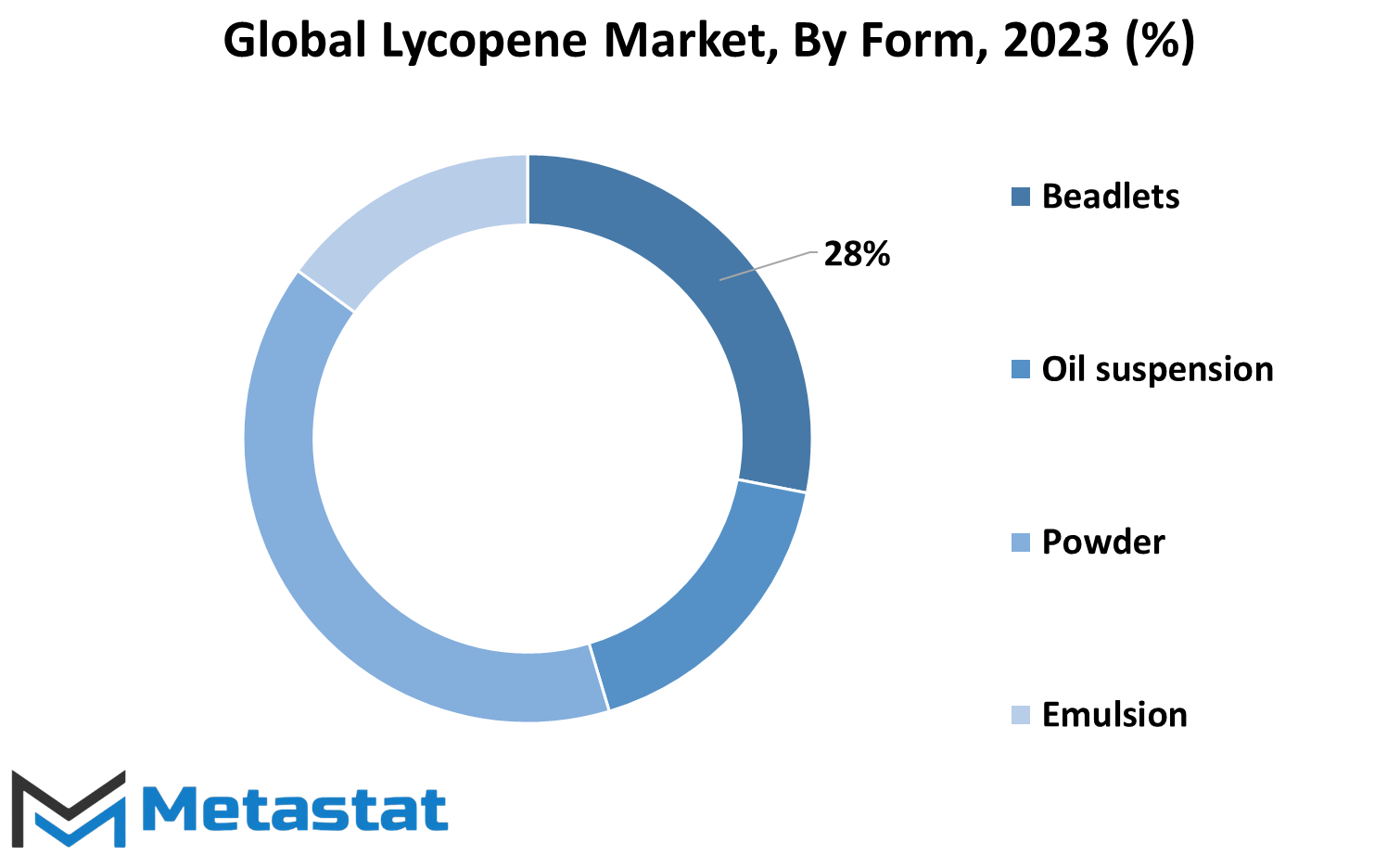
By Property
In examining the Global Lycopene Market, a nuanced understanding emerges when we consider its various properties. The market unfurls with distinct properties, each contributing to its multifaceted applications. Health Ingredient, valued at 72.6 USD Million in 2022, stands out as a significant facet. It reflects the market’s role in the health and wellness sector, where lycopene is recognized for its potential benefits in supporting human health.
Another pivotal property is the Coloring Agent segment, valued at 61.7 USD Million in the same period. This underscores the market’s role in the food and cosmetic industries, where lycopene serves as a natural coloring agent. Its vibrant hues not only enhance the visual appeal of products but also cater to the growing demand for natural and plant-based alternatives in various consumer goods.
These two primary properties, Health Ingredient and Coloring Agent, encapsulate the market’s versatility. The Health Ingredient aspect aligns with the global shift towards healthier lifestyles, driving the demand for nutritional supplements and functional foods. Simultaneously, the Coloring Agent aspect responds to the increasing consumer preference for natural and sustainable ingredients in everyday products.
Lycopene, derived from tomatoes and other fruits, has found its place in an array of applications due to these distinctive properties. Its role as a health-promoting ingredient and a natural coloring agent signifies a convergence of consumer preferences, industry trends, and the market’s adaptability.
The Global Lycopene Market, through its diverse properties, mirrors the evolving landscape of consumer needs and industrial applications. The market’s dynamism is reflected in its ability to cater to the demand for both health-centric products and sustainable, naturally colored goods, making lycopene a versatile and sought-after component in various sectors.
By Application
The Global Lycopene Market showcases a diverse range of applications that cater to various consumer needs. This market, characterized by its adaptability, finds utility across different sectors. Let’s delve into the primary applications that define its global presence.
Dietary supplements represent a significant facet of the global Lycopene market. These supplements, infused with the goodness of Lycopene, aim to provide consumers with a convenient and concentrated source of this beneficial compound. Health-conscious individuals often turn to dietary supplements to enhance their nutritional intake, and the inclusion of Lycopene aligns with this health-focused trend.
Food & beverages constitute another substantial application category within the global Lycopene market. The incorporation of Lycopene into food products and beverages speaks to the growing consumer awareness regarding the health benefits associated with this natural antioxidant. From tomato-based sauces to fruit juices, the versatility of Lycopene finds expression in an array of consumables.
Personal care products represent a noteworthy sector where Lycopene plays a role. The beauty and skincare industry has witnessed an increasing demand for natural ingredients, and Lycopene fits seamlessly into this trend. Its antioxidant properties make it a desirable component in various personal care products, ranging from creams to lotions, contributing to the holistic wellness narrative.
Pharmaceuticals emerge as a crucial application, highlighting the medicinal potential of Lycopene. The pharmaceutical industry recognizes the antioxidant and anti-inflammatory properties of Lycopene, incorporating it into medications and supplements aimed at addressing specific health concerns. This strategic integration aligns with the broader trend of exploring natural compounds for therapeutic purposes.
The applications of Lycopene in dietary supplements, food & beverages, personal care products, and pharmaceuticals collectively underscore its versatility. The global market embraces these diverse uses, reflecting the compound’s journey from a natural antioxidant to a valuable component in various products that contribute to health and well-being. The multifaceted nature of Lycopene’s applications positions it as a sought-after ingredient across different sectors, exemplifying its impact on both consumer choices and industry trends.
REGIONAL ANALYSIS
The Global Lycopene Market is a complex interplay of regional dynamics, each region contributing uniquely to the market landscape. Understanding these regional nuances is crucial for comprehending the market's overall trajectory.
In Europe, the Lycopene Market exhibits notable growth, driven primarily by increased consumer awareness of the health benefits associated with lycopene-rich products. The region's focus on preventive healthcare and the rising trend of natural supplements contribute significantly to the market's expansion. Additionally, the robust presence of key market players in Europe further fuels market growth.
Moving to North America, the market showcases a similar upward trajectory. The region's health-conscious population actively seeks products with natural antioxidants like lycopene. The prevalence of chronic diseases and a growing emphasis on nutrition propel the demand for lycopene-infused products. Moreover, advancements in food processing technologies in North America facilitate the incorporation of lycopene into a variety of consumables, augmenting its market presence.
Asia-Pacific, with its vast population and diverse dietary habits, emerges as a pivotal player in the Global Lycopene Market. The region's consumers are increasingly inclined towards functional foods, creating a substantial market for lycopene-rich products. Growing health awareness, coupled with the influence of western dietary patterns, further propels market growth in Asia-Pacific. Also, the agricultural abundance in some countries in the region facilitates lycopene production from natural sources, contributing to market expansion.
In Latin America, the market experiences a steady ascent, driven by a burgeoning middle-class population and an increasing focus on preventive healthcare. The region's traditional cuisines, rich in tomatoes and other lycopene sources, inherently contribute to the market's growth. As consumers become more health-conscious, there is a noticeable uptick in the demand for products fortified with lycopene.
The Middle East and Africa, while currently holding a smaller market share, exhibit potential for growth. Increasing awareness of the health benefits of lycopene and a gradual shift towards healthier dietary choices contribute to market development. However, factors such as economic stability and market accessibility play crucial roles in determining the pace of growth in this region.
The Global Lycopene Market's regional analysis highlights the diverse factors shaping its trajectory. From the health-conscious population in North America to the influence of traditional diets in Latin America, each region brings a unique set of drivers and opportunities to the table. Recognizing and navigating these regional intricacies is key for businesses aiming to thrive in this burgeoning market.
COMPETITIVE PLAYERS
In the expansive landscape of the Global Lycopene Market, several key players drive the industry forward. Among them are notable entities such as Allied Biotech Corporation and Divi's Laboratories Limited. These companies play a pivotal role in shaping the trajectory of the lycopene sector.
Allied Biotech Corporation, a significant player in the market, contributes to the industry's growth and development. Their presence underscores the importance of strategic players in ensuring a robust market. With a focus on lycopene, Allied Biotech Corporation brings a wealth of experience and expertise to the table, influencing the market dynamics.
Similarly, Divi's Laboratories Limited stands as a formidable force within the lycopene industry. Their role is vital in meeting market demands and setting benchmarks for quality and innovation. As a key player, Divi's Laboratories Limited significantly impacts the competitive landscape, driving advancements and contributing to the overall vibrancy of the lycopene market.
These key players exemplify the dynamism and competitiveness inherent in the Global Lycopene Market. Their contributions extend beyond individual company success, influencing the collective progress of the industry. As drivers of innovation, quality, and market trends, Allied Biotech Corporation and Divi's Laboratories Limited shape the narrative of the lycopene sector on a global scale.
Lycopene Market Key Segments:
By Source
- Synthetic
- Natural
By Form
- Beadlets
- Oil suspension
- Powder
- Emulsion
By Property
- Health Ingredient
- Coloring Agent
By Application
- Dietary supplements
- Food & beverages
- Personal care products
- Pharmaceuticals
Key Global Lycopene Industry Players
- Allied Biotech Corporation
- Divi's Laboratories Limited
- Koninklijke DSM N.V.
- E.I.D. – Parry (India) Limited
- Farbest Brands
- Lycored
- Plamed Green Science Group
- Plantnat
- San-Ei Gen F.F.I., Inc.
- Shaanxi Kingsci Biotechnology Co., Ltd.
- Sv Agrofood
- Vidya Herbs Pvt. Ltd.
- Wellgreen Technology Co., Ltd.
- Xi'an Natural Field Bio-Technique Co., Ltd.
- Xi’an Pincredit Bio-tech Co., Ltd.
WHAT REPORT PROVIDES
- Full in-depth analysis of the parent Industry
- Important changes in market and its dynamics
- Segmentation details of the market
- Former, on-going, and projected market analysis in terms of volume and value
- Assessment of niche industry developments
- Market share analysis
- Key strategies of major players
- Emerging segments and regional growth potential



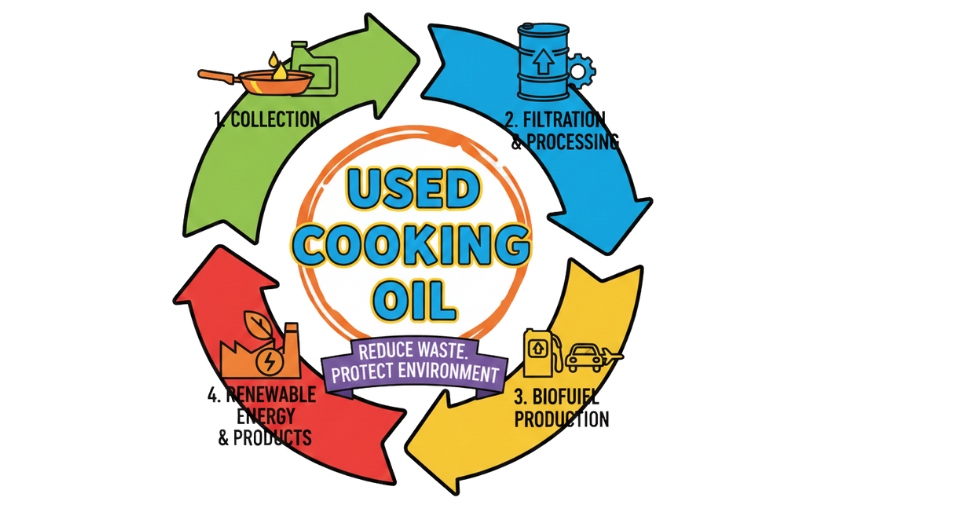
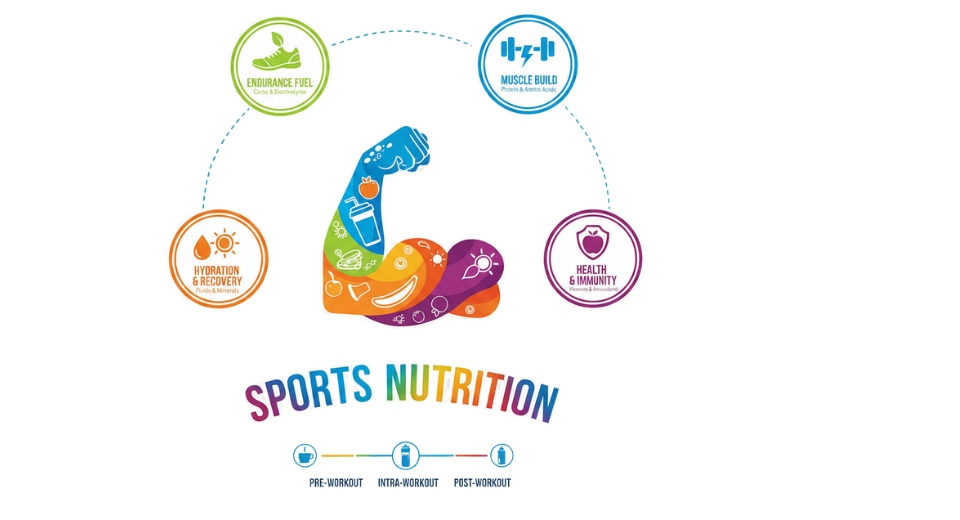
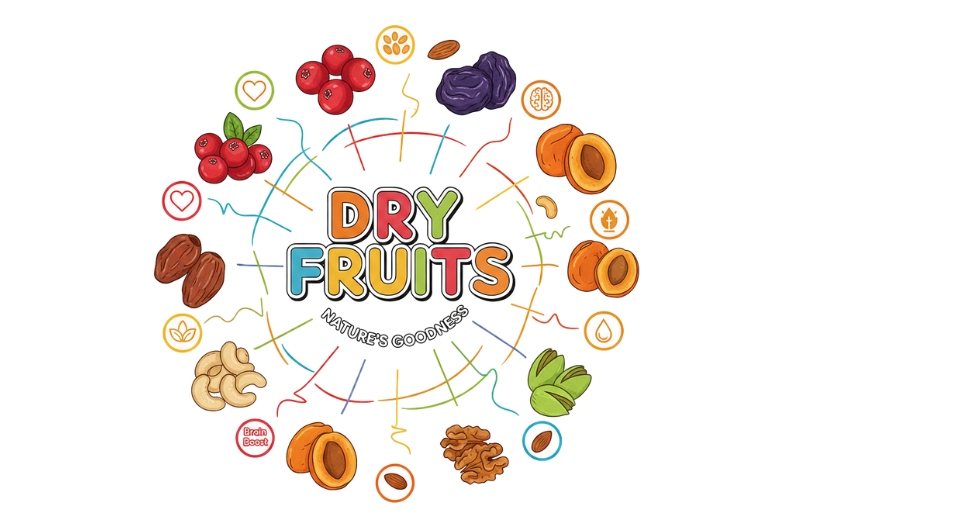


 US: +1 3023308252
US: +1 3023308252






